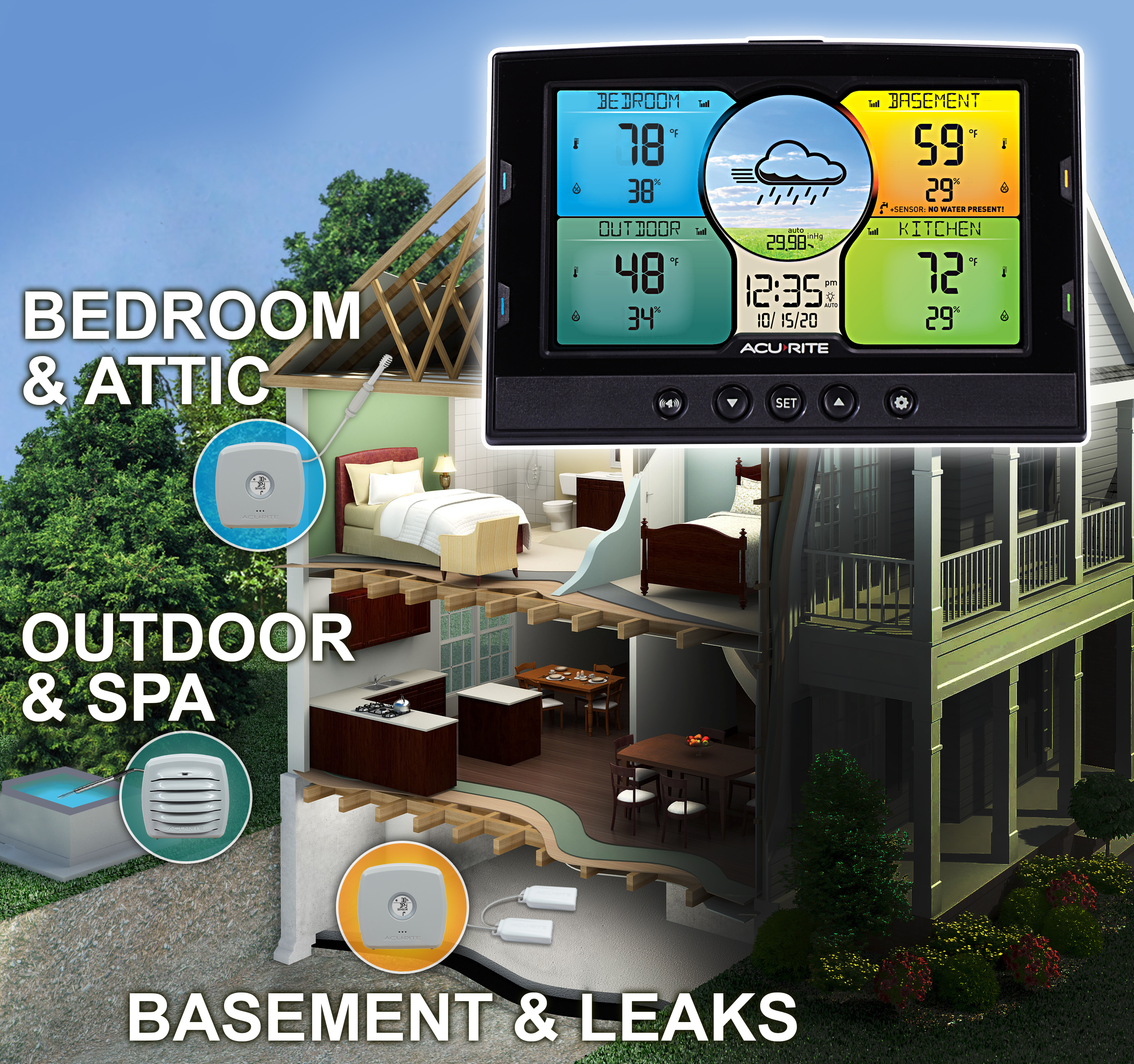Ideal Conditions for the Best Night's Sleep
Enjoy a More Peaceful Slumber by Maintaining Proper Indoor Environmental Conditions
Have you ever camped in the middle of summer? Have you ever had your air conditioner fail, or your heat go out? If you answered "yes" to these questions, you know firsthand how hard it can be to sleep when conditions aren't right. Even in non-extreme situations, studies have shown that small changes in a bedroom environment can have a dramatic effect on the quality of your sleep.
For your baby’s health and safety, meanwhile, it is important that the nursery surrounds the little one in comfortable sleeping conditions. And as every parent knows, keeping an infant well rested translates to everyone feeling better rested. So, in addition to picking that perfect mattress, the key to blissful slumber is monitoring and controlling the environment where you and your family sleep.
Helpful Tips for a Restful Bedroom Environment
- Keep your bedroom nice and dark by closing blinds/curtains and turning off lights. A smart phone lighting up at night can also disrupt sleep.
- Keep your bedroom quiet. If you live in an environment where this isn’t possible (e.g. an urban apartment), consider a white noise/sleep sound generator designed to help you rest.
- Some experts suggest making your bedroom a place only for sleep. This means moving the TV, desk, gym equipment, etc. to another part of your home.
- Clutter is also said to adversely affect sleep. Keeping a bedroom tidy and picked up can translate into peaceful feelings.
- Color is also said to have an effect on sleep too. Some suggest painting a bedroom blue, green, or yellow.
- Keeping your home clean also helps with sleep. In addition to regular scrubbing and vacuuming, routine replacement of air filters is important. Some also recommend using an air purifier.
- Maintain consistent and comfortable temperature and humidity levels in your bedroom throughout the year.
Maintain Bedroom Conditions that are Conducive to Sleep
Problems
Studies have shown that temperature and humidity levels outside a certain range can make it difficult for people to sleep. Too low of humidity can affect discomfort by drying-out nasal passages and causing cracked, itchy skin. Too high humidity can compromise an environment with mold and allergens. In addition, temperatures that fall outside the range of “room temperature” can lead to sleep difficulty. Rapid changes in conditions are also said to potentially aggravate sleep.
Solutions
The EPA recommends keeping relative humidity between 30% and 60%. Many sleep experts will suggest keeping it as close to 50% if possible. Sleep experts also suggest 65°F as an ideal temperature, with some suggesting temperatures as low as 60°F for athletes. You know your body and preferences better than anybody, so a good strategy would be to start at 65°F and 50% RH and make adjustments as needed. In addition to monitoring conditions with a temperature and humidity meter, you can adjust ambient air using tools like humidifiers, dehumidifiers, as well as your home’s heating and cooling system. Home environment monitoring will enable you to maintain consistent sleep conditions throughout the year.
AcuRite Solutions & Tips
- Monitor Bedroom Conditions: Position an AcuRite Room Monitor in each household bedroom, away from sources of heated or cooled air (like vents), to measure ambient conditions.
- Use a Home Environment Display home monitoring equipment is used to monitor conditions measured by multiple temperature sensors and humidity sensors in different rooms of the house, and set alarms to alert you of undesirable conditions. These can include:
- Undesirably low or high temperatures
- Undesirably high or low humidity
More From AcuRite
Further Reading
There are many great resources for maintaining proper sleep conditions. Here are a few helpful articles and websites:
- Insomnia Land is an online community where people can share ideas on getting better sleep
- The National Sleep Foundation offers insights on many aspects of your sleep environment, including temperature
- Advanced Air provides these suggested guidelines for bedroom heat and humidity settings
- BabySlumber.com has these suggestions for a climate in your baby’s room
- Sylvane offers an array of tips for creating a healthy nursery
- The Alaska Sleep Clinic compiled this list of tips, in addition to maintaining temperature and humidity







